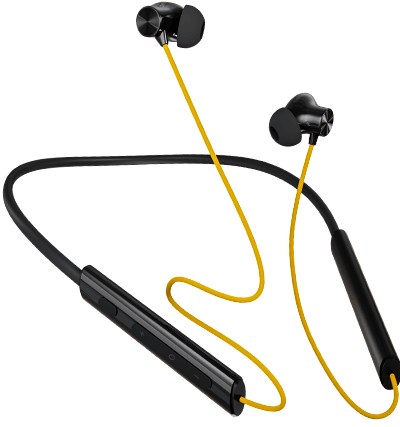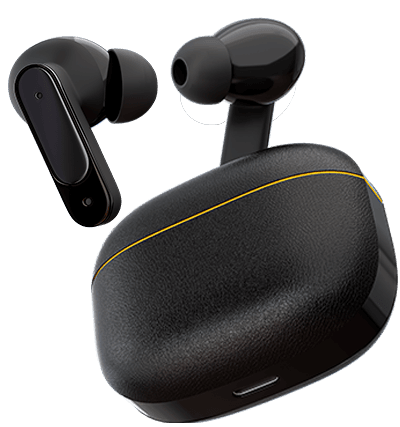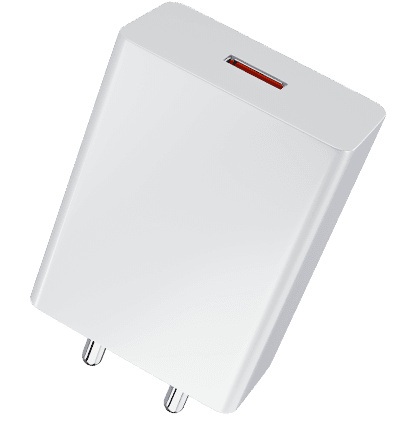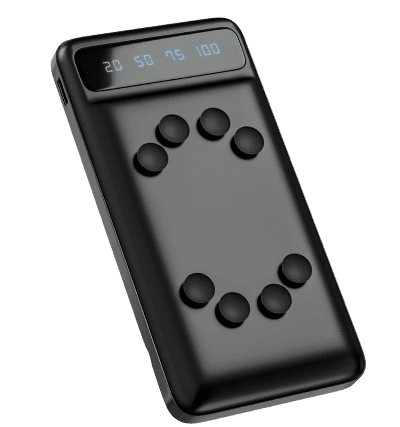An OTG (On-The-Go) cable is a specialized type of USB cable that serves as a bridge between various electronic devices, enabling them to communicate and share data seamlessly. Unlike traditional USB cables that establish a clear hierarchy between a host device (such as a computer) and peripheral devices (such as keyboards, mice, or external storage), an OTG cable blurs these lines by allowing devices to switch roles and function as either the host or the peripheral.
What is an OTG cable and what is it used for?
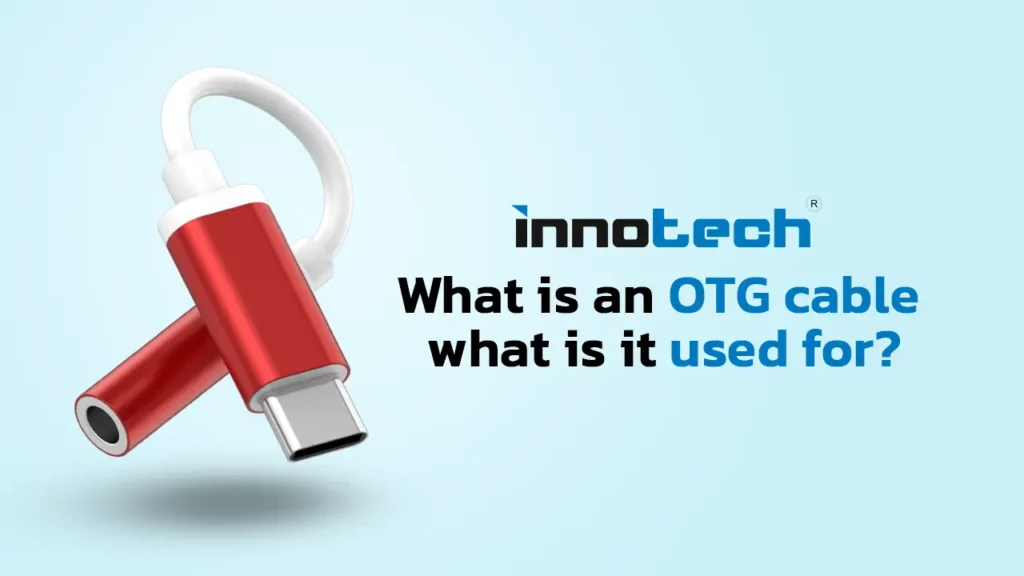
The concept of OTG technology emerged as a solution to the growing need for versatile connectivity between a wide range of devices, including smartphones, tablets, digital cameras, and more. It offers a flexible way to expand the capabilities of portable devices beyond their primary functions, making them more adaptable to different scenarios and tasks.
OTG cables have become an indispensable tool in the realm of modern technology, enabling users to connect various USB accessories directly to their mobile devices without the need for a computer as an intermediary.
Introduction to OTG Cable
This innovation has opened up a world of possibilities, from effortlessly transferring files and documents to connecting external storage devices for additional space. Moreover, the creative applications of OTG cables extend to music production, gaming, photography, and beyond, showcasing the adaptability and potential that this technology brings to our digital lives.
As we delve deeper into the functionalities, compatibility, and practical uses of OTG cables, we will uncover the ways in which this unassuming cable has revolutionized the way we interact with our devices and has become an essential tool for enhancing connectivity and user experiences.
Definition and Concept of OTG (On-The-Go) Cable:
An OTG (On-The-Go) cable is a specialized type of USB cable designed to enable direct communication and data exchange between electronic devices, without the need for a host computer. Unlike conventional USB cables that establish a strict hierarchy between a host device (like a computer) and peripheral devices (such as keyboards, mice, or printers), an OTG cable empowers devices to switch roles, allowing them to function as either the host or the peripheral as required.
The concept of OTG technology introduces a dynamic and versatile approach to connectivity, expanding the capabilities of devices like smartphones, tablets, and digital cameras. With an OTG cable, these devices gain the ability to interact with various USB peripherals, transforming them into multifunctional tools that adapt to a wide array of tasks and scenarios.
Evolution and Adoption of OTG Technology:
The evolution of OTG technology can be traced back to the late 1990s, when USB (Universal Serial Bus) was becoming the standard interface for connecting electronic devices. Initially, USB connections primarily involved communication between a computer (the host) and peripherals. However, as portable devices gained popularity and the need for direct device-to-device communication arose, the OTG concept emerged.
In the early 2000s, the USB Implementers Forum (USB-IF) introduced the OTG standard, outlining the specifications and protocols for OTG-enabled devices and cables. This paved the way for manufacturers to develop OTG-compatible hardware and accessories.
Over time, the adoption of OTG technology grew rapidly, especially with the rise of smartphones and tablets. These portable devices became central to our daily lives, and the ability to connect peripherals directly to them offered enhanced functionality and convenience. From sharing files with a USB flash drive to using external keyboards for improved productivity, OTG cables became an essential tool for users seeking seamless connections between devices.
As technology continued to advance, OTG functionality became more integrated into devices, and both micro-USB and USB-C connectors were designed to support OTG features. Today, the OTG standard has become a fundamental aspect of modern device connectivity, enabling users to unlock a world of possibilities by effortlessly linking various peripherals and accessories to their devices, ultimately reshaping the way we interact with and utilize our electronics.
Understanding OTG Cable Functionality:
The functionality of an OTG (On-The-Go) cable is rooted in its ability to establish a flexible and bidirectional connection between electronic devices, allowing them to interchange roles as either the host or the peripheral. This unique capability transforms the way devices communicate and share data, enhancing their versatility and utility.
At the core of OTG cable functionality lies the concept of device negotiation and power management. When an OTG cable is connected between two devices, such as a smartphone and a USB peripheral, a negotiation process takes place to determine which device assumes the role of the host and which becomes the peripheral. This negotiation is crucial to ensure seamless communication and proper data exchange.
device connectivity by allowing them to adapt and communicate in new ways. This adaptability enhances the practicality and convenience of portable devices, transforming them into powerful tools capable of accomplishing a diverse range of tasks.
How OTG Cables Enable Device Communication:
OTG (On-The-Go) cables play a pivotal role in enabling direct and efficient communication between electronic devices, creating a bridge that facilitates data exchange and functionality. This capability revolutionizes the way devices interact, enhancing their utility and versatility. The process through which OTG cables enable device communication involves a series of negotiations and protocols:
- Initial Connection: When an OTG cable is plugged into two devices, such as a smartphone and a USB peripheral, a detection process begins. Both devices exchange signals to identify each other and establish a communication link.
- Negotiation of Roles: A crucial step in OTG functionality is role negotiation. This process determines which device will act as the host (controller) and which will function as the peripheral (accessory). The negotiation is based on factors like device capabilities and user intentions.
- Control Transfer: Once roles are assigned, the host device takes control and initiates communication. It sends commands and requests to the peripheral device, which responds accordingly. This control transfer mechanism ensures seamless data exchange.
- Data Exchange: With roles established, data can be transferred bidirectionally. For example, a smartphone in host mode can read data from a connected USB flash drive or send data to a printer in peripheral mode.
- Dynamic Role Switching: OTG cables allow dynamic role switching, meaning devices can switch between host and peripheral modes during an active session. This versatility is a hallmark of OTG functionality and distinguishes it from conventional USB connections.
Differentiating Between Host and Peripheral Devices:
In the context of OTG technology, devices assume distinct roles that define their communication dynamics. Understanding the difference between host and peripheral devices is essential to grasp how OTG cables facilitate communication:
- Host Device: The host device takes on the role of a controller, similar to a computer in a traditional USB setup. It initiates communication, manages data transfers, and sends commands to the connected peripheral. Smartphones, tablets, and computers can function as host devices when connected via an OTG cable.
- Peripheral Device: The peripheral device acts as an accessory or extension to the host. It responds to commands and requests from the host, enhancing its functionality. Examples of peripheral devices include USB flash drives, external hard drives, keyboards, mice, printers, and digital cameras.
It’s important to note that OTG cables introduce a degree of flexibility by allowing devices to switch roles. This means a smartphone, initially functioning as the host to a USB keyboard, can later become a peripheral to a computer when transferring files. This adaptability enhances the overall user experience and widens the range of interactions between devices.
By grasping the concepts of role negotiation, control transfer, and bidirectional data exchange, along with the distinctions between host and peripheral devices, one can appreciate the transformative impact of OTG cables on device communication and their ability to enhance device functionality in myriad ways.
Compatibility and Supported Devices:
OTG (On-The-Go) cables have a broad spectrum of compatibility, making them applicable to a diverse range of electronic devices. Their versatility extends to various gadgets, enhancing their capabilities and enabling new functionalities. The compatibility of OTG cables is evident across:
- Smartphones and Tablets: OTG cables are extensively used with smartphones and tablets to connect USB peripherals such as keyboards, mice, game controllers, and external storage devices. This transforms these devices into more powerful and versatile tools.
- Digital Cameras: Cameras with USB ports can utilize OTG cables to directly transfer photos and videos to smartphones or tablets for quick sharing and editing.
- Gaming Consoles: Some gaming consoles support OTG connections, allowing gamers to use compatible USB game controllers, keyboards, and other accessories.
- Printers: With an OTG cable, you can connect a printer directly to your smartphone or tablet for easy and quick printing.
- Music Equipment: Musicians can connect MIDI controllers, synthesizers, and other music equipment to smartphones or tablets using OTG cables, expanding creative possibilities.
- External Storage Devices: USB flash drives, external hard drives, and memory card readers can all be connected to devices via OTG cables, providing additional storage and easy data transfer.
Devices That Benefit from OTG Cable Usage:
Numerous devices can reap the benefits of OTG cable usage, enhancing their functionality and user experience:
- Students and Professionals: OTG cables allow students and professionals to connect external keyboards for efficient typing and editing on smartphones or tablets.
- Photographers: Photographers can transfer photos from digital cameras to mobile devices for quick editing and sharing on social media platforms.
- Gamers: Gamers can enjoy a console-like experience by connecting game controllers to smartphones or tablets, elevating their gaming sessions.
- Travelers: OTG cables enable travelers to back up photos from cameras or smartphones onto USB drives, freeing up valuable storage space.
Operating Systems and Compatibility Considerations:
OTG cable compatibility is influenced by the operating system of the device and the support it offers for OTG functionality. Key points to consider include:
- Android: OTG functionality is prevalent in Android devices, often supported in versions 3.1 and later. Android’s open ecosystem makes it highly compatible with various peripherals.
- iOS: While Apple’s iOS devices have limited OTG support, certain apps and accessories can enable OTG-like features for specific tasks.
- Windows and macOS: OTG cables are less common with desktop operating systems, but they can be used with compatible hardware and devices.
- Compatibility Lists: It’s advisable to check compatibility lists provided by manufacturers or online communities to ensure your specific device and peripherals can work together using an OTG cable.
In essence, OTG cables transcend traditional connectivity boundaries, offering a convenient way to enhance the capabilities of a wide array of devices across different domains. By understanding compatibility considerations and exploring potential uses, users can harness the power of OTG cables to unlock new levels of productivity and creativity.
Practical Uses of OTG Cables:
OTG (On-The-Go) cables have ushered in a new era of practicality and convenience by enabling a variety of applications that enhance the functionality of mobile devices. From connecting peripherals to expanding storage options, OTG cables offer a multitude of practical uses:
Connecting USB Accessories to Mobile Devices:
OTG cables serve as a gateway to connect a wide range of USB accessories directly to mobile devices, transforming them into versatile tools:
- Keyboards and Mice: Typing lengthy documents and navigating user interfaces become effortless when connecting external keyboards and mice.
- Game Controllers: Gamers can enjoy console-like experiences by connecting game controllers, enhancing gameplay and immersion.
- USB Headsets and Microphones: OTG cables enable the use of high-quality audio peripherals for enhanced communication and media consumption.
- Printers: Printing documents and photos directly from a smartphone or tablet becomes seamless with an OTG cable.
External Storage Expansion and File Management:
The ability to connect external storage devices is a game-changer for managing files and expanding storage capacities:
- USB Flash Drives: OTG cables facilitate quick access to files stored on USB flash drives, making it easy to share and transfer data on the go.
- External Hard Drives: Connect larger storage devices for backing up important files or carrying extensive media libraries.
- Memory Card Readers: Photographers can transfer images from camera memory cards directly to mobile devices for editing and sharing.
Backup and Transfer of Data:
OTG cables provide a convenient means of backing up and transferring data between devices:
- Data Backup: Mobile devices can be backed up to external storage, safeguarding important files and ensuring data integrity.
- File Transfer: Moving files between devices becomes straightforward, whether it’s sharing photos with friends or exchanging documents for work.
- Media Playback: Enjoy movies, music, and other media stored on external drives or flash drives without taking up precious device storage.
- Data Recovery: In case of device malfunction, OTG cables enable access to data stored on external storage, aiding in data recovery efforts.
The practical uses of OTG cables extend beyond these examples, finding applications in photography, music production, and even on-the-go presentations. By enabling seamless connectivity and expanding the capabilities of mobile devices, OTG cables have become indispensable tools for modern lifestyles, enhancing productivity, creativity, and convenience.
Creative Applications and Beyond:
OTG (On-The-Go) cables have transcended conventional uses, venturing into creative realms and expanding possibilities in various domains. Here are some innovative applications that showcase the versatility of OTG technology:
OTG Cables in Music Production and MIDI Devices:
- MIDI Controllers: Musicians and music producers can connect MIDI keyboards, synthesizers, and other MIDI devices to smartphones or tablets. This integration opens doors to creating, recording, and editing music on the go.
- Digital Audio Interfaces: OTG cables enable the connection of external audio interfaces, elevating sound quality for recording vocals and instruments directly onto mobile devices.
- Electronic Instruments: By connecting electronic instruments like drum pads and electronic wind instruments, artists can craft unique sounds and compositions using their mobile devices.
Gaming Controllers and Enhanced Mobile Gaming:
- Console Experience: Gamers can amplify their mobile gaming experience by connecting console-style game controllers via OTG cables, offering precision controls and a more immersive gameplay environment.
- Multiplayer Gaming: OTG cables facilitate multiplayer gaming by connecting multiple game controllers to a single device, enabling competitive and cooperative gameplay on a larger scale.
- Adaptable Controls: Gamers can customize controls using various peripherals, tailoring their setup to specific game genres and personal preferences.
Photography and External Camera Connectivity:
- Camera Direct Transfer: Photographers can transfer images and videos from digital cameras or DSLRs directly to their mobile devices for quick editing, sharing, or posting on social media platforms.
- Remote Shooting: OTG cables enable remote control of cameras through dedicated apps, making it possible to adjust settings, capture images, and preview shots from a smartphone or tablet.
- Instant Sharing: By utilizing OTG cables, photographers can expedite the process of sharing high-quality images with clients, colleagues, or friends, without the need for a computer.
- Expanded Storage: External hard drives and memory card readers can be connected to mobile devices via OTG cables, providing ample storage space for large collections of high-resolution photos and videos.
These creative applications of OTG cables underscore their adaptability and transformative potential. By extending device capabilities beyond their original design, OTG technology empowers users to explore new horizons in music, gaming, photography, and other creative endeavors. As technology continues to evolve, the imaginative use of OTG cables will likely lead to even more innovative applications across diverse industries.
Troubleshooting and Tips:
Using OTG (On-The-Go) cables can greatly enhance device functionality, but like any technology, there can be challenges along the way. Here are some common issues that users might encounter when using OTG cables, along with practical solutions to address them, along with tips for maximizing performance and efficiency:
Common Issues and Solutions When Using OTG Cables:
- Device Not Recognizing Peripheral:
- Solution: Ensure both the host device and the peripheral are compatible with OTG functionality. Try reconnecting the cable or using a different cable to rule out potential connectivity issues.
- Slow Data Transfer:
- Solution: Use high-quality OTG cables and USB peripherals that support fast data transfer speeds. Verify that the peripherals are not operating in low-power mode, which might slow down transfers.
- Peripheral Disconnects Intermittently:
- Solution: Check the connection points on both the host device and the peripheral for any debris or damage. Use a stable surface to prevent unintentional movements that could disrupt the connection.
- Device Overheating:
- Solution: Avoid using power-hungry peripherals for extended periods. Ensure proper ventilation for the device and consider using OTG adapters with built-in power management.
- Insufficient Power to Peripheral:
- Solution: Some peripherals require more power than the host device can provide. Use a powered USB hub or a peripheral with its own power source to avoid power-related issues.
Maximizing Performance and Efficiency:
- Use Quality Cables: Invest in high-quality OTG cables to ensure stable connections and optimal data transfer speeds.
- Keep Connectors Clean: Regularly clean the USB connectors on both the cable and the devices to prevent dust and debris from affecting the connection.
- Check Device Compatibility: Before purchasing or connecting peripherals, verify that they are compatible with OTG functionality and your specific device.
- Avoid Cable Strain: Prevent unnecessary stress on the cable connectors by avoiding excessive bending or twisting.
- Update Software: Keep your device’s operating system and apps up to date to ensure compatibility and access to the latest features.
- Use OTG-Enabled Apps: Some apps are designed to work seamlessly with OTG cables. Explore and use apps optimized for peripheral interactions.
- Safe Ejection: Before disconnecting a peripheral, make sure to safely eject it from your device to avoid data corruption.
By troubleshooting common issues and following these tips, users can make the most of their OTG cable experience, enhancing connectivity, data management, and overall performance. OTG technology offers tremendous potential, and with a little care and attention, users can harness its benefits to the fullest extent.
Future Prospects and Technological Advancements:
The trajectory of OTG (On-The-Go) technology continues to evolve, with exciting innovations and developments on the horizon. As technology marches forward, here are some potential advancements and upcoming trends in the realm of OTG technology:
Potential Innovations and Upcoming Developments in OTG Technology:
- Enhanced Data Transfer Speeds: Future iterations of OTG cables might support even higher data transfer speeds, enabling quicker and smoother file exchanges between devices.
- Universal Compatibility: Efforts to standardize OTG functionality across different platforms and operating systems could lead to broader compatibility, making OTG cables even more versatile.
- Wireless OTG: The integration of wireless technologies could enable devices to communicate and share data without physical cables, further enhancing convenience and flexibility.
- Advanced Power Management: Future OTG cables may incorporate advanced power management features, optimizing power distribution for efficient device operation and charging.
- Smart Integration: OTG cables could evolve to include embedded intelligence, allowing devices to automatically switch between host and peripheral modes based on user needs.
Integration of OTG Features in Emerging Devices:
- Wearable Technology: As wearables gain prominence, integrating OTG capabilities could enable seamless communication between wearables and smartphones, enhancing data exchange and functionality.
- Augmented and Virtual Reality: OTG technology could play a vital role in augmented and virtual reality applications, enabling direct connections between AR/VR headsets and other devices.
- IoT Devices: The Internet of Things (IoT) ecosystem could benefit from OTG capabilities, allowing direct communication and control between IoT devices and smartphones.
- Medical Devices: OTG technology could be integrated into medical devices, facilitating data transfer between health-monitoring equipment and mobile devices for efficient patient care.
- Smart Home Integration: OTG-enabled devices could serve as central controllers for smart home systems, enabling direct communication and control over connected devices.
The integration of OTG features into emerging devices and the potential advancements in technology will likely shape a future where connectivity is even more seamless and devices work harmoniously together. As the digital landscape evolves, OTG technology is poised to play a pivotal role in enhancing user experiences, productivity, and creative possibilities across a wide range of industries and applications.
Conclusion:
In a world driven by technological innovation, OTG (On-The-Go) cables stand as a testament to the transformative power of connectivity. These unassuming cables have evolved from simple adapters to essential tools that bridge the gap between devices, revolutionizing the way we interact with our technology.
Recap of the Versatility and Importance of OTG Cables:
OTG cables have showcased their incredible versatility by enabling devices to dynamically switch roles between hosts and peripherals. They have empowered us to connect USB accessories directly to our smartphones, tablets, and other gadgets, expanding their capabilities beyond imagination. Whether it’s enhancing mobile gaming with controllers, transferring files effortlessly between devices, or even delving into creative domains like music production and photography, OTG cables have proven to be catalysts for innovation.
Impact on Enhancing Connectivity and User Experience:
The impact of OTG cables on connectivity and user experience is profound. They have shattered the barriers that once confined our devices, creating a seamless network where information flows freely. OTG technology has not only simplified tasks but also opened new avenues for creativity and productivity. By facilitating direct connections and enabling devices to work harmoniously, OTG cables have elevated our digital lives, transforming ordinary devices into extraordinary tools.
In conclusion, the journey through the world of OTG cables reveals a remarkable fusion of technology and convenience. As we continue to push the boundaries of what is possible, OTG cables remain steadfast companions, unlocking new realms of potential and enhancing our daily interactions with technology.
For more insights on enhancing your tech experience, consider reading my other articles: “Fixing OTG Cable Issues: A Troubleshooting Guide” and “Comparing Innotech Neckband Earphone: The Ultimate Guide“. These articles delve into optimizing your audio gadgets and making informed choices for an even more immersive experience.

